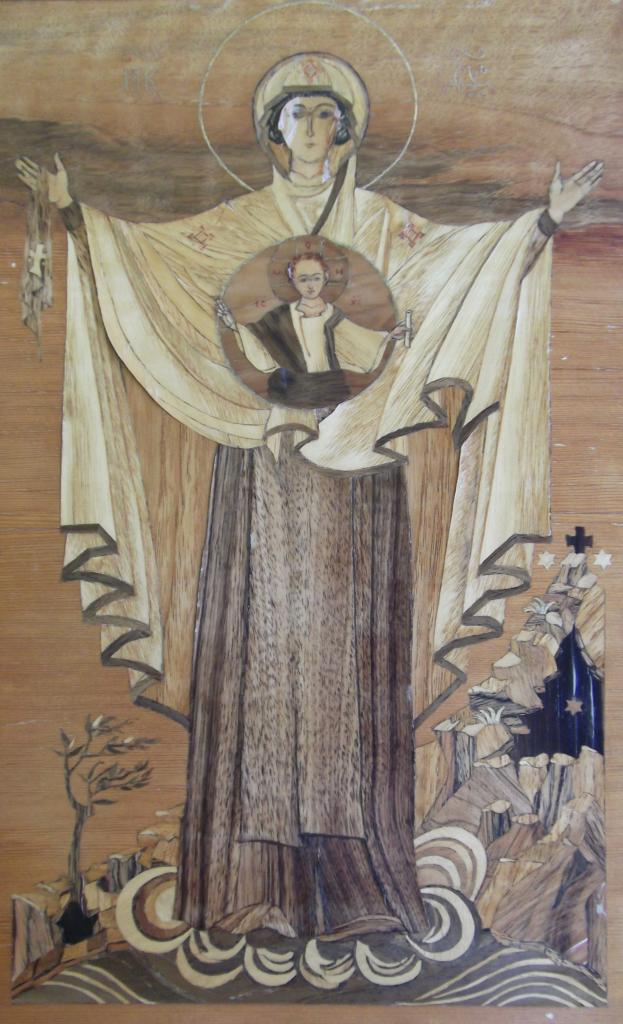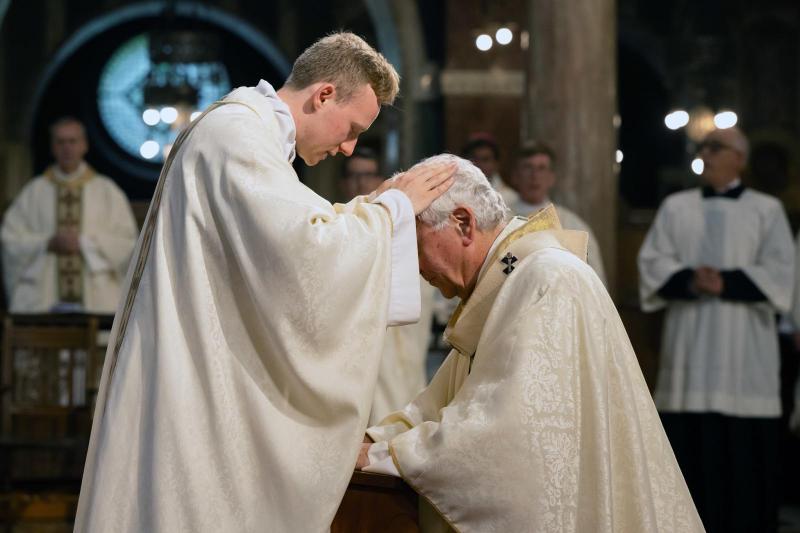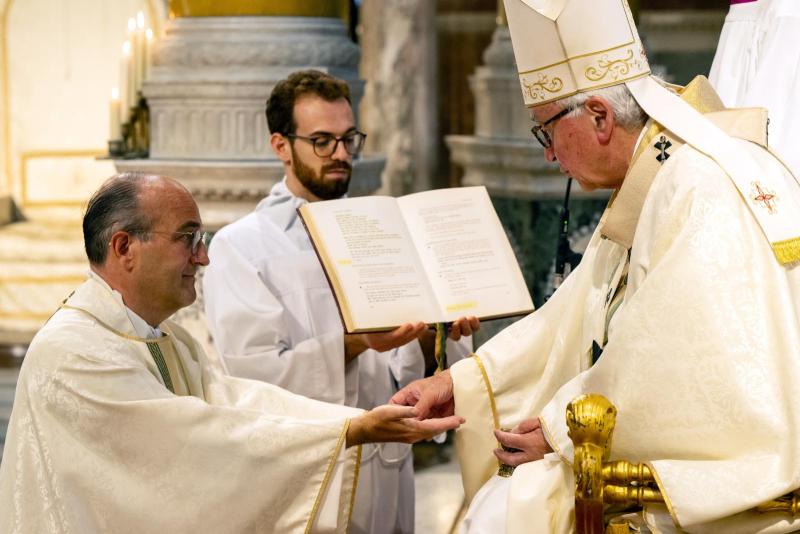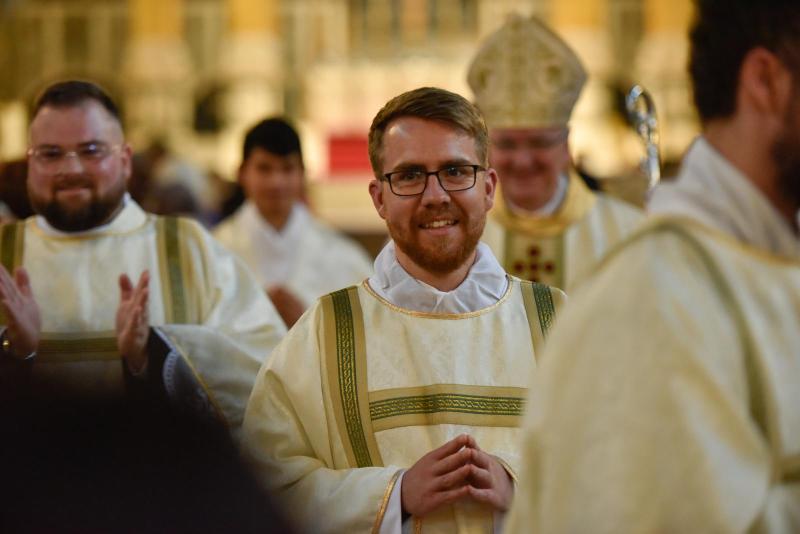The Carmelite Charism
Every story of vocation is unique whether it is the story of a pope or a parent, a nurse or a nun. The call of God to follow his Son together with the great adventure of prayer as described by the Carmelite Doctors of the Church, Saints Teresa, John of the Cross and Thérèse, and many other Carmelite saints, draw many to Carmelite spirituality and some to the varied forms of ‘apostolic’ Carmelite life. It also draws some of us (perhaps initially with reservations!) to enclosed contemplative life. Within the ‘crucible’ of the cloister, in the silence of our hearts, in common worship of the Office of the Church, in the daily privilege of Mass; by faithfulness both to solitude and the demands of community living we try to give ourselves over to God. This is our ‘apostolate,’ joining with Jesus in His prayer for the Church and the World.
When God invites someone to a Carmelite vocation they find it is an invitation which is continually unfolding. How Mary lived her invitation and fiat to her own unique vocation becomes our model and guide. Our Lady of Mount Carmel has been a focus of devotion and inspiration to Christians for centuries. For those of us in ‘her Order’ she is a living presence in our monasteries and in our hearts. She is ‘The Lady of the Place’.
Mount Carmel is a physical mountain in the Holy Land described in the Bible in its beauty and intimately connected with the prophet Elijah. At the time of the crusades Carmel was home to a group of European hermits who became officially organised under a rule of life in 1209. With the victories of the Saracens these ‘hermits in community’ were exiled from their mountain home but they returned to Europe with ‘the Land of Carmel’ planted in the heart and spirit of their religious life. At Aylesford around 1251 St Simon Stock is said to have had a vision of Our Lady who gave him the Carmelite brown scapular. She promised her protection to anyone who undertook to wear it with devotion. Today many lay people continue to wear the scapular or scapular medal as a sign of devotion to Our Lady and their connection to the Carmelite charism.
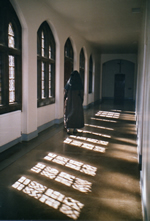 Carmel flourished in England until it was driven out at the Reformation but during this very period a woman was reforming Carmel in Spain. The impact of St Teresa of Avila’s teaching was huge and that teaching and spirit continues to be relevant for the contemporary Church. Anticipating Vatican II by 400 years St Teresa advocated renewal. This she did by seeing the needs of the time and going back to the sources of Christian and Carmelite life. Keeping her eyes fixed on the Lord and favoured by God with an intense spiritual life she teaches the centrality of prayer (i.e. a personal, living relationship with God) and what flows from and is united with that – service. She is an authentic and inspired teacher for the New Evangelisation of today.
Carmel flourished in England until it was driven out at the Reformation but during this very period a woman was reforming Carmel in Spain. The impact of St Teresa of Avila’s teaching was huge and that teaching and spirit continues to be relevant for the contemporary Church. Anticipating Vatican II by 400 years St Teresa advocated renewal. This she did by seeing the needs of the time and going back to the sources of Christian and Carmelite life. Keeping her eyes fixed on the Lord and favoured by God with an intense spiritual life she teaches the centrality of prayer (i.e. a personal, living relationship with God) and what flows from and is united with that – service. She is an authentic and inspired teacher for the New Evangelisation of today.
Following the Reformation in this country, English people accepted the separation from home and loved ones to enter religious life on the Continent. Their prayers for the Catholic Church’s restoration in England were eventually realised and when, in the 19th century, the call came from Westminster (from Cardinals Wiseman and Manning and from other priests and people in the Archdiocese) the ‘discalced’ (or Teresian) Carmelites, both friars and nuns, were ready. This year is the 150th anniversary of the arrival of the friars who still serve at the Church of Our Lady and St Simon Stock in Kensington.
Today there are two monasteries of enclosed 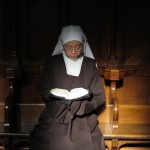 Carmelite nuns in our diocese. The Monastery of the Most Holy Trinity, Notting Hill was founded in 1878. In a history that mirrors St Teresa’s own, many other monasteries were founded from here including, in 1925, the Monastery of Our Alone Saviour and St Mary the Virgin now in Ware, Hertfordshire. Our prayer for priests is well-known and the diocesan seminary of Allen Hall holds a particular place of affection in our communities’ hearts and histories. Our prayer for the Church also extends to the whole mission of the Church and the ministries of all the baptised.
Carmelite nuns in our diocese. The Monastery of the Most Holy Trinity, Notting Hill was founded in 1878. In a history that mirrors St Teresa’s own, many other monasteries were founded from here including, in 1925, the Monastery of Our Alone Saviour and St Mary the Virgin now in Ware, Hertfordshire. Our prayer for priests is well-known and the diocesan seminary of Allen Hall holds a particular place of affection in our communities’ hearts and histories. Our prayer for the Church also extends to the whole mission of the Church and the ministries of all the baptised.
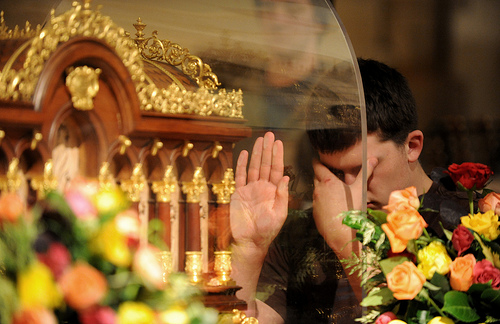 The missionary fervour of Carmel finds famous expression through St Thérèse of Lisieux, the enclosed French Carmelite whom Pope Pius XI declared co-patron of the missions. The welcome that has always been a feature of the relations between Westminster priests and people towards Carmel manifested itself in an amazing way when Archbishop Vincent invited the relics of St Thérèse to Westminster three years ago. It was a joy for us to gather both communities at Notting Hill and to open the enclosure doors to our ‘little’ sister’s relics and to the many who flocked to venerate and pray. Members of both communities also joined the throngs at our Cathedral for the celebrations and vigils there. At his homily at the ceremony of farewell to the relics Archbishop Vincent said “The practice of love in every relationship is the heart of our mission…Make love real where you live...That is her invitation.” ‘Making love real’ in Westminster was what we experienced in those days. This continues to be the story of Carmel in our diocese. The welcome given to the relics of St Thérèse was profound and humbling for us. Ordinary people, in the midst of their busy lives, came to show their love and gratitude to someone who is a ‘saint of the ordinary’. They also showed their love and gratitude to those of us who live the gift and the ordinariness of the Carmelite vocation today. Our Lady too lived her life in the midst of the ordinary. Whether as Westminster’s people we are celebrating God’s love in St Thérèse or the visit of the Pope or simply being attentive to the day-to-day relationships and tasks set before us we can join with Our Lady in giving thanks for all that God is doing for us.
The missionary fervour of Carmel finds famous expression through St Thérèse of Lisieux, the enclosed French Carmelite whom Pope Pius XI declared co-patron of the missions. The welcome that has always been a feature of the relations between Westminster priests and people towards Carmel manifested itself in an amazing way when Archbishop Vincent invited the relics of St Thérèse to Westminster three years ago. It was a joy for us to gather both communities at Notting Hill and to open the enclosure doors to our ‘little’ sister’s relics and to the many who flocked to venerate and pray. Members of both communities also joined the throngs at our Cathedral for the celebrations and vigils there. At his homily at the ceremony of farewell to the relics Archbishop Vincent said “The practice of love in every relationship is the heart of our mission…Make love real where you live...That is her invitation.” ‘Making love real’ in Westminster was what we experienced in those days. This continues to be the story of Carmel in our diocese. The welcome given to the relics of St Thérèse was profound and humbling for us. Ordinary people, in the midst of their busy lives, came to show their love and gratitude to someone who is a ‘saint of the ordinary’. They also showed their love and gratitude to those of us who live the gift and the ordinariness of the Carmelite vocation today. Our Lady too lived her life in the midst of the ordinary. Whether as Westminster’s people we are celebrating God’s love in St Thérèse or the visit of the Pope or simply being attentive to the day-to-day relationships and tasks set before us we can join with Our Lady in giving thanks for all that God is doing for us.
16th July is the feast day of Our Lady of Mount 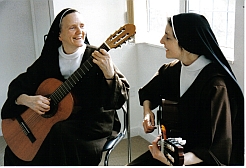 Carmel. May we wish you all a Happy Feast and assure you of our continuing prayer for all your needs and intentions and those of our diocese.
Carmel. May we wish you all a Happy Feast and assure you of our continuing prayer for all your needs and intentions and those of our diocese.
More information about the Carmelite nuns’ vocation can be found at the websites of each monastery. www.carmelitesnottinghill.org.uk and www.warecarmel.com
Carmelites in Westminster
Discalced Carmelite Friars ODC
Carmelite Priory, Kensington Church St., London W8 4BB
carmelitechurch.org / kensington2@rcdow.org.uk
Carmelite Friars O. Carm.
63 East End, East Finchley, London N2 0SE
carmelites.org / carmelites.eastfinchley@carmelnet.org
Carmelite Missionaries
189 Gloucester Place NW1
cmldn@yahoo.com
Lay (Secular) Carmelites
carmeldiscalcedsecular.org.uk / carmelinthecity@laycarmel.org
Carmelite Secular Institutes
Notre Dame de Vie (Retreats/Prayer Group)
ndv.org.uk / info@ndv.org.uk
The Leaven
theleaven.org.uk / leaven@ouvip.com
Carmelite Nuns
Notting Hill Carmel
87 St. Charles Square, London W10 6EA
carmelitesnottinghill.org.uk
Ware Carmel
Ware Park, Ware, Herts. SG12 0DT
warecarmel.com
